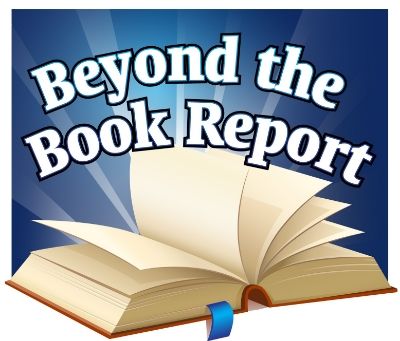

The curriculum comes on a DVD that contains printable files and video lectures as well as a teacher's guide that includes samples of all of the activities, reading log samples, as well as a teaching schedule. The DVD, along with the teacher's guide, walks the student and the teacher through the entire process, one step at a time:
- Season One includes three units that start the student on the road to a solid foundation of literature studies with learning tools needed to learn how to express their written response in a basic book report, a pamphlet book report, and a journalism book report.
- Season Two includes two units that cover poetry and drama. Among the poetry lessons is one video instruction that is set aside only for teachers to view that teaches how to play a learning game called Like/Not Like.
- Season Three includes three units that includes public speaking, essays, and research papers. The essay portion even includes instruction on how to write an essay for the SATs along with a practice sheet to get writing. The public speaking instruction is amazing, including PowerPoint instructions, and the research paper instruction is extensive.
Each unit introduces the concept, followed by an activity, and then provides a final product worth 100 points:
Season One
Unit 1 - The Basic Book Report
Unit 2 - The Pamphlet Book Report
Unit 3 - The News Article Book Report
Season Two
Section 1 - The Poetry Book Report
Section 2 - The Drama Book Report
Season Three
Section 1 - Public Speaking
Section 2 - Essays
Section 3 - Research Papers
The video instructions all seemed to be of varying lengths of time. Some seemed to have lasted approximately 15 minutes each, some much less, some possibly slightly longer. While the video instruction is a very important part of this curriculum, it is not the only aspect used to teach. There is plenty of hands-on activities, and of course, reading. Obviously, with the book reports, part of the learning time includes taking time to actually read the book while keeping a reading log. The reading logs are also included as a printable file.
Though he sprouted early, reading fluently at the age of 3, my son is a very reluctant reader and hates writing. My daughter, on the other hand, eats, sleeps, and dreams books. But, she has limited experience writing book reports. She has done some summaries for me, but never a full-fledged report.
WHAT DID WE THINK?
- Printable note cards for the students to use for notetaking during the videos
- Instructional videos
- Printable activity, rubrics, and worksheets
I also liked that there was a fairly clear-cut grading scale provided, using a 100-point system and a rubric for each activity, along with reading logs, and teaching sheets.
For the sake of my hesitant writer/reader son, I really appreciated how the instructor explained things, like why it's important to read the classics, and how she explained that she just wanted the students to try their hand at poetry, not pushing the student over the edge.
I also love how there are literary terms taught, so the child also learns the terminology that goes along with each style of writing.
Find Analytical Grammar on Facebook and Twitter.
See what other members of The Old Schoolhouse Crew thought of the other products they received from Analytical Grammar:












No comments:
Post a Comment